The automotive world is abuzz with excitement as BMW introduces two remarkable electric vehicles: the BMW i4 and the BMW i5. Both models embody the brand’s commitment to sustainability without compromising on performance and luxury. In this article, we’ll delve into a detailed comparison of these two innovative cars to help you decide which one best suits your needs.
BMW i4 vs BMW i5 – Which one offers the better deal?
Two cars, one duel: BMW i4 meets BMW i5.
Which one wins in performance, efficiency and value for money? Find out now!
Design and Body Type
The BMW i4 is crafted as a sleek hatchback, reflecting a modern and sporty aesthetic. Its design emphasizes aerodynamic efficiency, enhancing not only its visual appeal but also its performance on the road. Measuring 4783 mm in length, 1852 mm in width, and 1448 mm in height, the i4 offers a spacious interior within a compact footprint.
On the other hand, the BMW i5 stands out as a sophisticated sedan. This model is notably larger, with dimensions of 5060 mm in length, 1900 mm in width, and 1515 mm in height. The i5’s more traditional sedan styling combined with its electric powertrain provides an air of elegance and authority, making it suitable for both business and personal use.
Performance and Powertrain
Under the hood, both models are equipped with advanced electric powertrains, yet they boast distinct performance figures. The i4 offers multiple power outputs, ranging from 286 HP to a robust 544 HP, with torque figures between 400 Nm and 795 Nm. This translates to exhilarating acceleration times, with the top-spec model capable of sprinting from 0 to 100 km/h in just 3.9 seconds.
In comparison, the BMW i5 features power outputs ranging from 340 HP to an impressive 601 HP. The torque ranges from 430 Nm to a potent 820 Nm, allowing the i5 to reach 100 km/h in as little as 3.8 seconds. Both models utilize a dual reduction gearbox automatic transmission, ensuring smooth and responsive power delivery.
Driving Range and Efficiency
The BMW i4 exhibits a commendable electric range, with versions capable of covering between 485 km and 582 km on a single charge, depending on the variant. Its energy consumption varies, with models achieving figures as low as 15.6 kWh/100 km, emphasizing its efficiency.
Meanwhile, the BMW i5 holds its own with an electric range similar to the i4, offering between 511 km and 582 km based on the chosen variant. The i5’s consumption rates are slightly higher, maxing out at 18.4 kWh/100 km, but still position it well within the efficient spectrum of electric vehicles.
Interior Comfort and Technology
Inside, both vehicles offer luxurious environments designed for comfort and advanced technology. The i4 sports a modern 5-seater cabin with an emphasis on driver engagement and usability. High-quality materials and cutting-edge infotainment systems ensure a first-class experience for both driver and passengers.
The i5, with its sedan body style, provides slightly more spacious seating and a generous trunk capacity of 490 liters compared to the i4’s 470 liters. The styling is elevated further by high-end technology features that include a large digital display, advanced connectivity options, and an intuitive interface for a seamless driving experience.
Safety and Efficiency Ratings
Both BMW i4 and i5 come with a strong commitment to safety, boasting high CO2 efficiency ratings classified as ‘A’, due to their zero emissions. BMW’s latest safety technologies, including driver assistance systems and autonomous features, are integrated into both models, ensuring peace of mind on the road.
Conclusion
In conclusion, the choice between the BMW i4 and BMW i5 ultimately comes down to personal preference and lifestyle needs. The i4 appeals to those looking for a sporty and dynamic hatchback experience, while the i5 is ideal for those who prioritize a spacious and sophisticated sedan form. Both vehicles are a testament to BMW’s innovative spirit and commitment to electrification, setting benchmarks in the electric vehicle market.
Here’s where it gets real: The technical differences in detail
Costs and Efficiency:
Price and efficiency are often the first things buyers look at. Here it becomes clear which model has the long-term edge – whether at the pump, the plug, or in purchase price.
BMW i4 has a distinct advantage in terms of price – it starts at 49400 £, while the BMW i5 costs 60200 £. That’s a price difference of around 10800 £.
When it comes to electricity consumption, both models perform equally – each averaging 14.70 kWh per 100 km.
As for range, the BMW i5 performs slight better – achieving up to 627 km, about 14 km more than the BMW i4.
Engine and Performance:
Power, torque and acceleration say a lot about how a car feels on the road. This is where you see which model delivers more driving dynamics.
Both models deliver identical power – 601 HP each.
In acceleration from 0 to 100 km/h, the BMW i4 is minimal quicker – completing the sprint in 3.70 s, while the BMW i5 takes 3.80 s. That’s about 0.10 s faster.
In terms of top speed, the BMW i5 performs barely noticeable better – reaching 230 km/h, while the BMW i4 tops out at 225 km/h. The difference is around 5 km/h.
There’s also a difference in torque: BMW i5 pulls slight stronger with 820 Nm compared to 795 Nm. That’s about 25 Nm difference.
Space and Everyday Use:
Whether family car or daily driver – which one offers more room, flexibility and comfort?
Both vehicles offer seating for 5 people.
In curb weight, BMW i4 is slight lighter – 2070 kg compared to 2195 kg. The difference is around 125 kg.
In terms of boot space, the BMW i5 offers slight more room – 490 L compared to 470 L. That’s a difference of about 20 L.
When it comes to payload, BMW i5 slightly takes the win – 545 kg compared to 480 kg. That’s a difference of about 65 kg.
Who wins the race?
The BMW i4 proves to be edges out slightly and therefore becomes our DriveDuel Champion!
BMW i4 is the better all-rounder in this comparison.
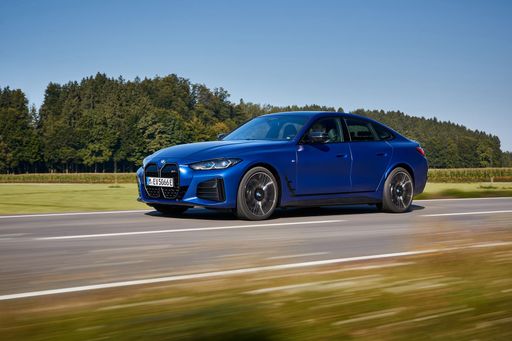 @ BMW Group Press
@ BMW Group Press
BMW i4
BMW i4
The BMW i4 arrives with the poise of a classic Gran Coupé, marrying BMW's playful handling with a sleek, modern interior that makes switching to electric feel like an upgrade rather than a compromise. For buyers who want a practical daily driver that still enjoys a spirited back-road run, the i4 quietly delivers smiles and a surprising dose of driver engagement.
details @ BMW Group Press
@ BMW Group Press
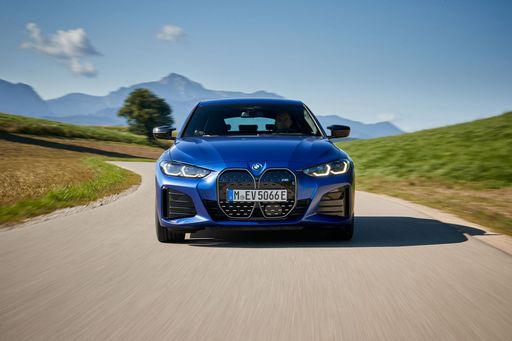 @ BMW Group Press
@ BMW Group Press
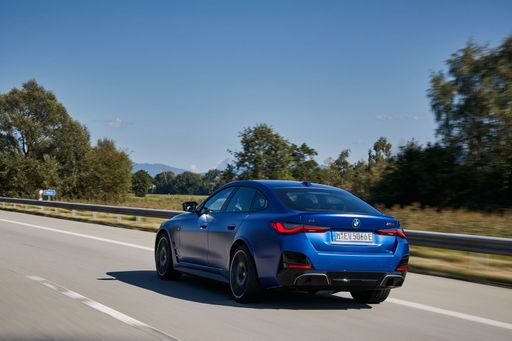 @ BMW Group Press
@ BMW Group Press
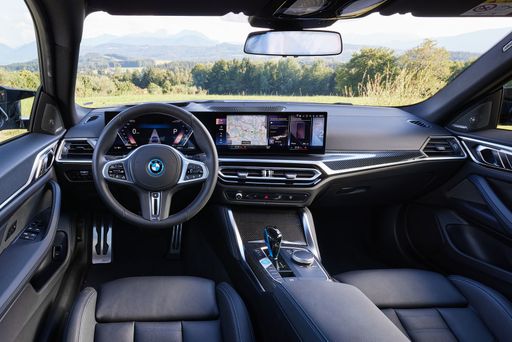 @ BMW Group Press
@ BMW Group Press
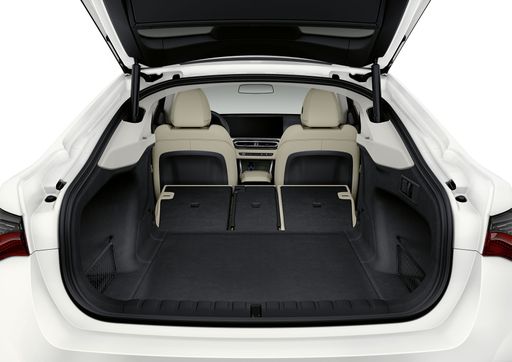 @ BMW Group Press
@ BMW Group Press
BMW i5
The sleek new i5 captivates drivers with its striking design and innovative features that blend luxury and efficiency. Inside, the spacious cabin boasts cutting-edge technology, ensuring a connected and comfortable ride for all passengers. Whether navigating city streets or embarking on a weekend getaway, the i5 delivers a dynamic driving experience that is sure to impress.
details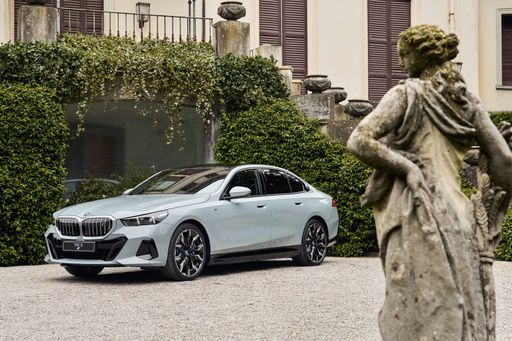 @ BMW Group Press
@ BMW Group Press
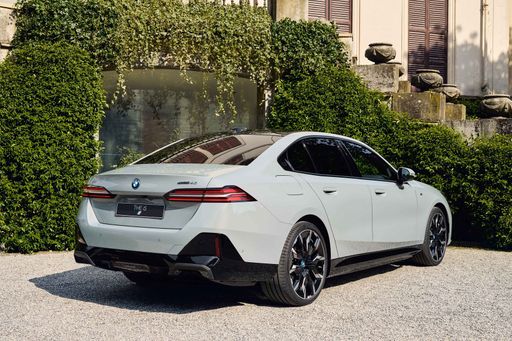 @ BMW Group Press
@ BMW Group Press
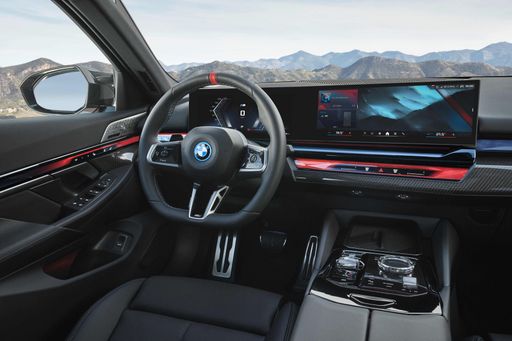 @ BMW Group Press
@ BMW Group Press
 @ BMW Group Press
@ BMW Group Press
|
 @ BMW Group Press
@ BMW Group Press
|
|
|
|
Costs and Consumption |
|
|---|---|
|
Price
49400 - 62500 £
|
Price
60200 - 85300 £
|
|
Consumption L/100km
-
|
Consumption L/100km
-
|
|
Consumption kWh/100km
14.7 - 16.7 kWh
|
Consumption kWh/100km
14.7 - 17.1 kWh
|
|
Electric Range
514 - 613 km
|
Electric Range
540 - 627 km
|
|
Battery Capacity
67.1 - 81.3 kWh
|
Battery Capacity
81.20 kWh
|
|
co2
0 g/km
|
co2
0 g/km
|
|
Fuel tank capacity
-
|
Fuel tank capacity
-
|
Dimensions and Body |
|
|---|---|
|
Body Type
Hatchback
|
Body Type
Sedan
|
|
Seats
5
|
Seats
5
|
|
Doors
5
|
Doors
4
|
|
Curb weight
2070 - 2285 kg
|
Curb weight
2195 - 2370 kg
|
|
Trunk capacity
470 L
|
Trunk capacity
490 L
|
|
Length
4783 mm
|
Length
5060 mm
|
|
Width
1852 mm
|
Width
1900 mm
|
|
Height
1448 mm
|
Height
1505 - 1515 mm
|
|
Max trunk capacity
1290 L
|
Max trunk capacity
-
|
|
Payload
445 - 480 kg
|
Payload
525 - 545 kg
|
Engine and Performance |
|
|---|---|
|
Engine Type
Electric
|
Engine Type
Electric
|
|
Transmission
Automatic
|
Transmission
Automatic
|
|
Transmission Detail
Reduction Gearbox
|
Transmission Detail
Reduction Gearbox
|
|
Drive Type
Rear-Wheel Drive, All-Wheel Drive
|
Drive Type
Rear-Wheel Drive, All-Wheel Drive
|
|
Power HP
286 - 601 HP
|
Power HP
340 - 601 HP
|
|
Acceleration 0-100km/h
3.7 - 6 s
|
Acceleration 0-100km/h
3.8 - 6 s
|
|
Max Speed
190 - 225 km/h
|
Max Speed
193 - 230 km/h
|
|
Torque
400 - 795 Nm
|
Torque
430 - 820 Nm
|
|
Number of Cylinders
-
|
Number of Cylinders
-
|
|
Power kW
210 - 442 kW
|
Power kW
250 - 442 kW
|
|
Engine capacity
-
|
Engine capacity
-
|
General |
|
|---|---|
|
Model Year
2025
|
Model Year
2023 - 2024
|
|
CO2 Efficiency Class
A
|
CO2 Efficiency Class
A
|
|
Brand
BMW
|
Brand
BMW
|
What drivetrain options does the BMW i4 have?
The BMW i4 is available as Rear-Wheel Drive or All-Wheel Drive.
The prices and data displayed are estimates based on German list prices and may vary by country. This information is not legally binding.
